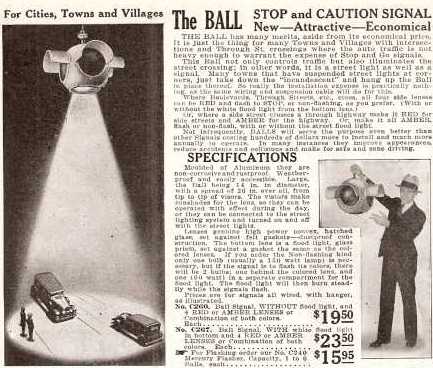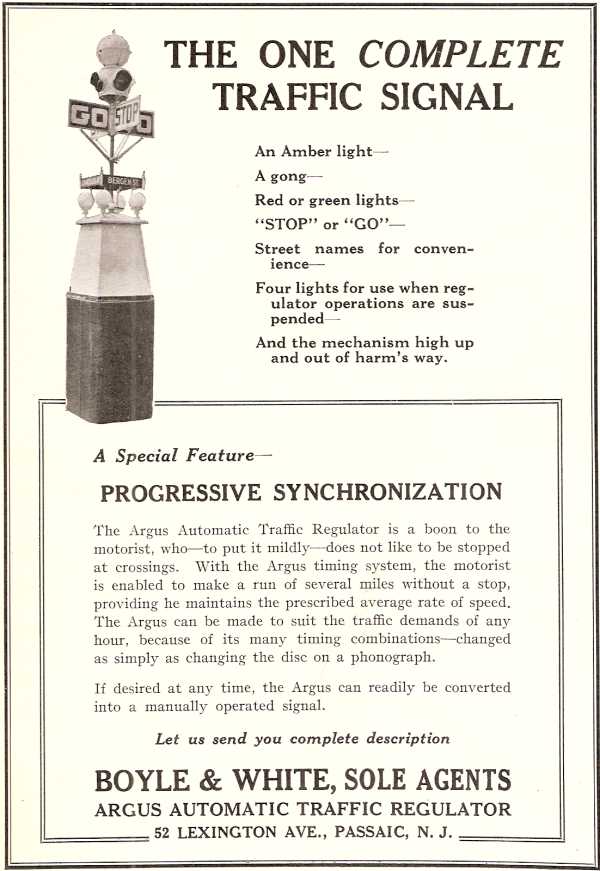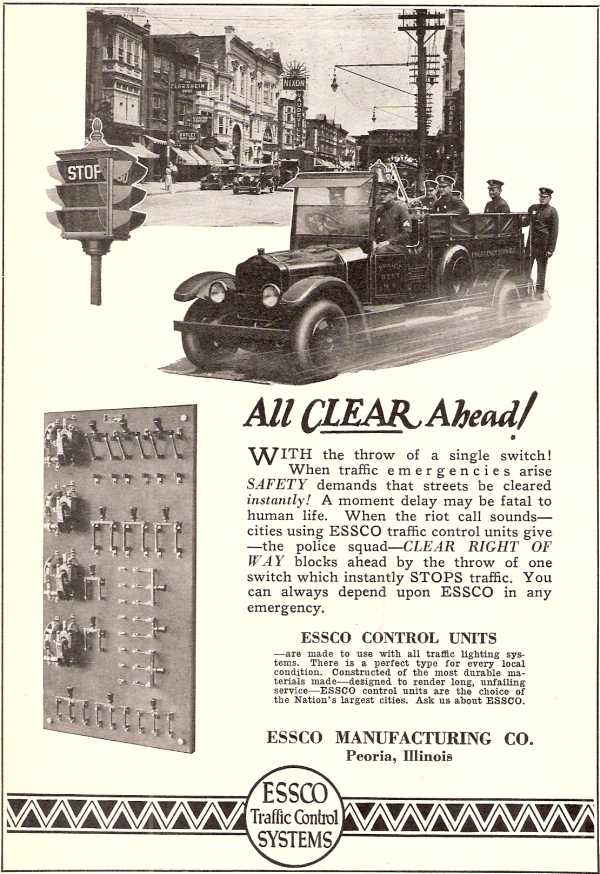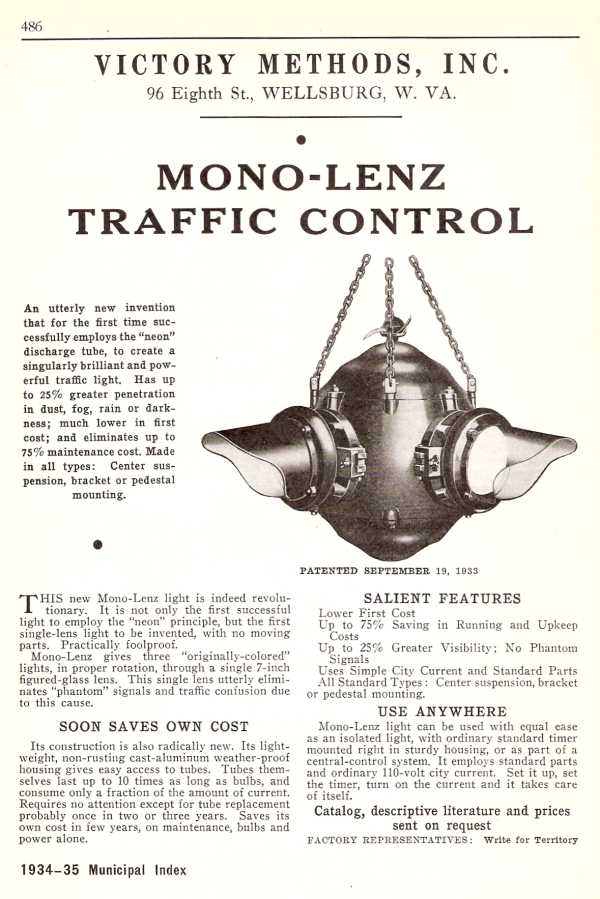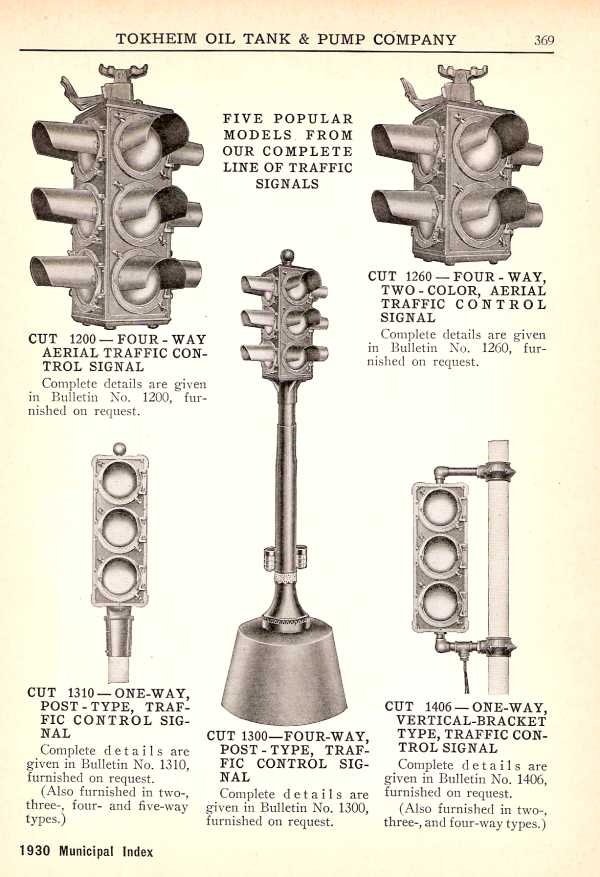|
This signal manufactured by Attica Traffic Signal Company in 1925 offered what was perhaps the first "countdown" signal. The smaller lights would go out one by one to inform drivers and pedestrians as to how much time was left in the signal's cycle.

|
|
Although automatic traffic signals were replacing traffic police and police were more involved in ensuring compliance with traffic control devices and protecting pedestrians rather than actually direct traffic, some engineers still wanted divers to hear a familiar whistle when signals changed.
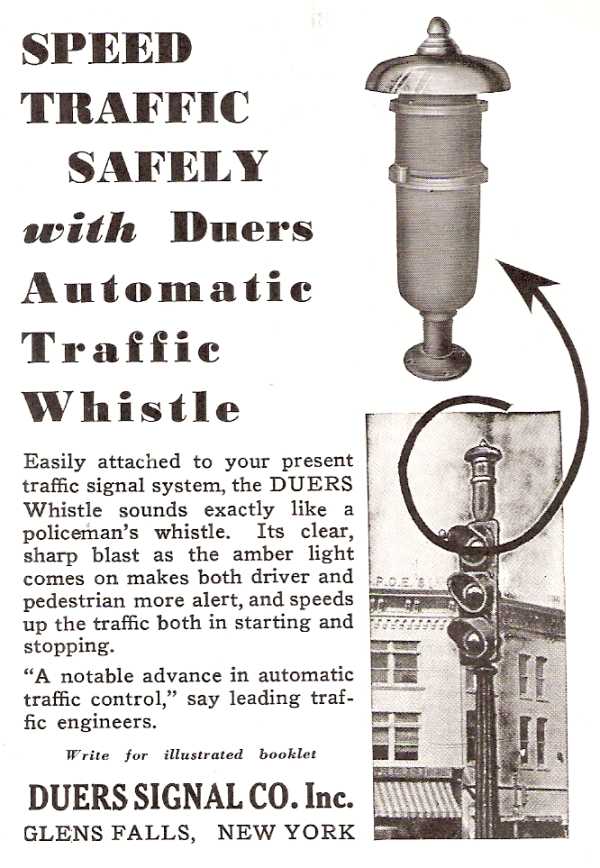
|
|
Although pedestal designs were losing popularity, some municipalities still preferred the "traditional" traffic signal mounted on a pedestal in the centers or "throats" of intersections. A few manufacturers were committed to those designs and served that market.
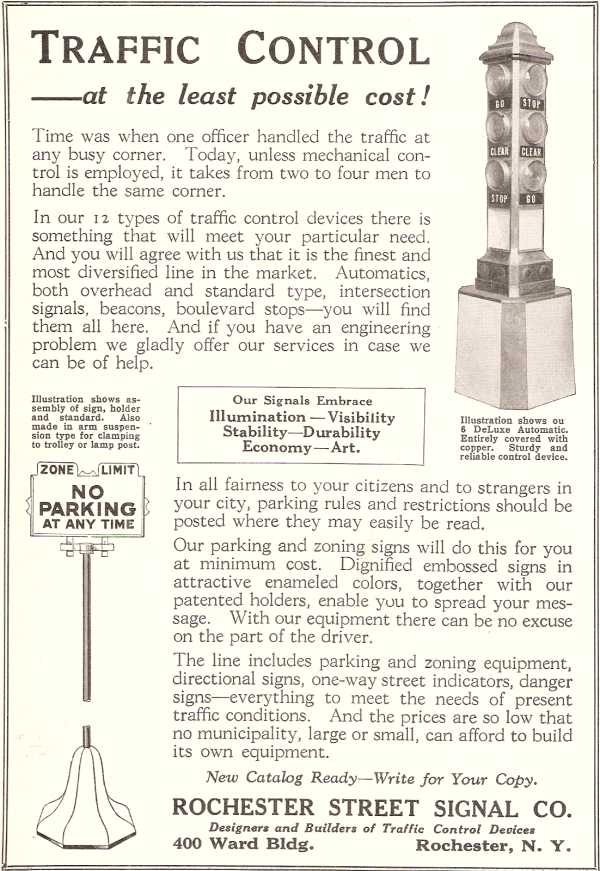
|
